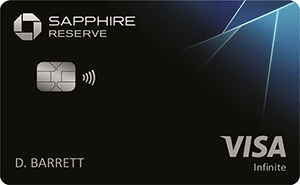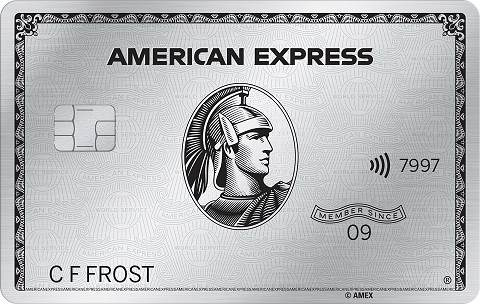When it comes time to hop on a plane, train or automobile, there’s one thing that can offer some peace of mind: travel insurance. But while lost luggage, delayed flights or interrupted plans may be top-of-mind concerns, coverage for unforeseen circumstances like travel-related accidents should also be considered.
Here’s a breakdown of what travel accident insurance is, what it covers and what to know when purchasing a policy for a vacation.
What is travel accident insurance?
Travel accident coverage is largely what it sounds like — a specific benefit of travel insurance that provides financial protection for accidents that happen while you’re traveling. But there are limitations and variations for not only what’s covered, but also what the term means depending on the plan you select.
🤓Nerdy Tip
Travel accident insurance coverage is sometimes called “Emergency accident coverage” or “Emergency medical coverage,” depending on the plan. As well, travel accident insurance may include or be offered separately from accidental death and dismemberment coverage. Jump to learn more about definitions »
Chase Sapphire cardholders, for example, receive accidental death or dismemberment coverage as part of their travel accident insurance policy. Coverage applies when the cardholder pays for their air, bus, train or cruise transportation with the card.
In contrast, most policies purchased from travel insurance providers cover you no matter when or where during your travels an accident strikes (so long as you’re within your originally selected travel dates and actively traveling, but more on that in a minute).
Other policies might offer accident coverage as an optional upgrade on top of a baseline policy.
Travel accident coverage defined
Because this type of insurance can be presented in a variety of ways, it’s important to understand the differences and read your policy for clarification.
-
Travel accident insurance: This coverage is often an umbrella term that includes death and dismemberment and/or emergency medical coverage. But some policies don’t use the term at all, while others use it to describe death and dismemberment benefits exclusively. Still others lump the term “accidents” in with emergency medical.
-
Emergency medical: This term is typically used for just what it sounds like: any sort of emergency medical care required during your travels, accident-related or otherwise. This coverage will reimburse you for any emergency medical costs up to the policy limit.
-
Accidental death and dismemberment: This benefit is generally a set amount, not a cost-specific reimbursement-related coverage like with emergency medical. This means that if you die as a result of an accident during your travels or have a dismemberment or severe disability, you or your chosen beneficiary will receive the flat amount listed in your policy — usually 100% of the maximum benefit in the case of death and 50% in the case of a lost limb.
Exact verbiage may differ, which can impact the sort of coverage offered versus what you think you’re getting. So always read up on the details.
What does accident travel insurance cover?
Specific coverage differs from one policy to another.
Generally, though, travel accident insurance or emergency accident coverage, especially when lumped in with death and dismemberment benefits, will cover any sort of loss of life or limb, whether that’s eyesight, a hand or a foot, or an accident that results in required emergency medical attention during your travels.
When it’s presented as emergency medical coverage, it may also reimburse you for expenses like doctor visits, hospitalizations, necessary medication, X-rays or ambulance fees.
What’s generally not covered?
Not every injury from all types of accidents is covered by every travel insurance policy.
-
Adventure sports. Many policies don’t cover injuries that happen as a result of extreme sports or similar activities, so if you plan on bungee jumping, mountain biking or snowboarding, you may need to consider a plan that specifically covers adrenaline-based activities.
-
Additional care back home. You’re covered only for accidents that occur during your trip and for medical services rendered while you’re still traveling. If you seek additional medical care after you get home, it’s usually not covered by travel insurance.
-
Alcohol and drugs. As a general rule, travel accident insurance (and travel insurance more broadly) doesn’t cover the consequences of being under the influence of alcohol or narcotics, especially above legal limits.
Cards with travel accident coverage
Many travel cards offer built-in travel accident coverage when you use them to book a trip.
Terms and coverage vary, so make sure you read the fine print, but here’s a look at some popular cards and the insurance coverage they offer.
Travel protections (not a comprehensive list)
• Travel accident: Up to $500,000.
• Trip delay: Up to $500 per ticket for delays more than 12 hours.
• Trip cancellation: Up to $10,000 per person and $20,000 per trip. Maximum benefit of $40,000 per 12-month period.
• Trip interruption: Up to $10,000 per person and $20,000 per trip. Maximum benefit of $40,000 per 12-month period.
• Travel accident: Up to $1 million.
• Trip delay: Up to $500 per ticket for delays more than 6 hours.
• Trip cancellation: Up to $10,000 per person and $20,000 per trip. Maximum benefit of $40,000 per 12-month period.
• Trip interruption: Up to $10,000 per person and $20,000 per trip. Maximum benefit of $40,000 per 12-month period.
• Travel accident: Up to $500,000.
• Trip delay: Up to $500 per trip for delays more than 6 hours.
• Trip cancellation: Up to $10,000 per trip. Maximum benefit of $20,000 per 12-month period.
• Trip interruption: Up to $10,000 per trip. Maximum benefit of $20,000 per 12-month period.
• Travel accident: Up to $500,000.
• Trip delay: Up to $500 per ticket for delays more than 12 hours.
• Trip cancellation: Up to $10,000 per trip. Maximum benefit of $20,000 per 12-month period.
• Trip interruption: Up to $10,000 per trip. Maximum benefit of $20,000 per 12-month period.
How to choose trip accident insurance
When planning for travel and choosing accident insurance, make sure to read policy information carefully, as with all travel insurance.
Ensure that you understand the differences in coverage, payout and limitation information between offerings like travel accident insurance, emergency medical coverage, and death and dismemberment benefits. Read detailed policy information before you buy to know what’s covered and what to do if the worst happens.
American Express insurance disclosures
Insurance Benefit: Trip Delay Insurance
-
Up to $500 per Covered Trip that is delayed for more than 6 hours; and 2 claims per Eligible Card per 12 consecutive month period.
-
Eligibility and Benefit level varies by Card. Terms, Conditions and Limitations Apply.
-
Underwritten by New Hampshire Insurance Company, an AIG Company.
Insurance Benefit: Trip Cancellation and Interruption Insurance
-
The maximum benefit amount for Trip Cancellation and Interruption Insurance is $10,000 per Covered Trip and $20,000 per Eligible Card per 12 consecutive month period.
-
Eligibility and Benefit level varies by Card. Terms, Conditions and Limitations Apply.
-
Underwritten by New Hampshire Insurance Company, an AIG Company.
How to maximize your rewards
You want a travel credit card that prioritizes what’s important to you. Here are our picks for the best travel credit cards of 2024, including those best for:




